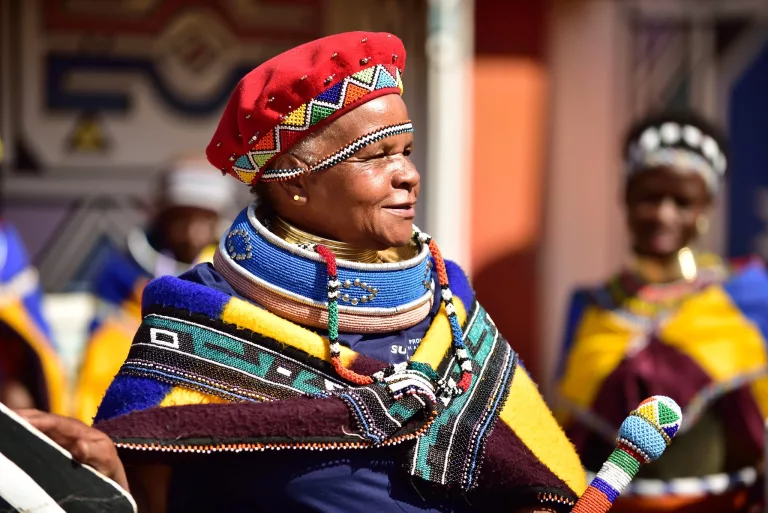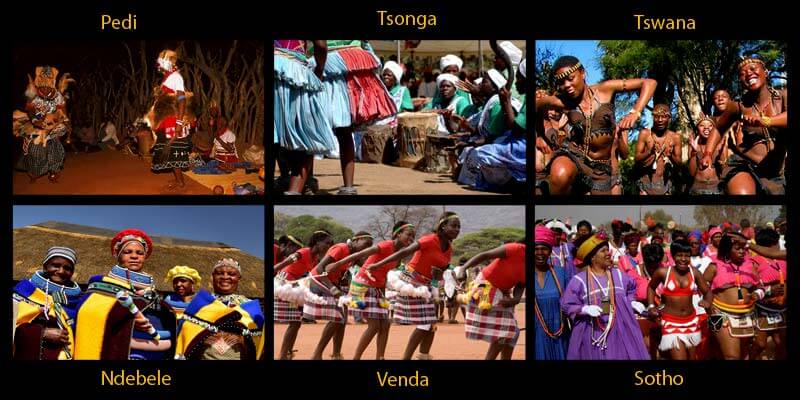Not known Facts About South African Culture Today
Not known Facts About South African Culture Today
Blog Article
6 Simple Techniques For South African Culture Today
Table of ContentsGetting The South African Culture Today To WorkThe Definitive Guide for South African Culture TodayThe smart Trick of South African Culture Today That Nobody is Talking AboutEverything about South African Culture TodaySouth African Culture Today Can Be Fun For EveryoneNot known Facts About South African Culture Today
This follows with singing and drum pounding. The couple after that meet the seniors and speak about the value of their union. An issue of significance in Zambian villages is the passing away of liked ones. All participants of the village put cash, time and effort with each other for the interment of the deceased.Throughout the grieving duration; males stay outside your home and the women remain inside your house of the deceased. After speaking about the deceased, the town strolls to the area of burial to say their last farewells. Songs and dancing is a very important facet of the Zambian society. The numerous tribal units have their own dancing types; however, makishi prevails amongst all tribes.
The 15-Second Trick For South African Culture Today
When it pertains to music, drums are used one of the most, with a selection of drumming events. In Zambia, bulk of the individuals are Christian; Protestant and Roman Catholic. There are small groups of Muslims and Hindus, with the rest following regional indigenous tribal beliefs.

South African heritage and society is exceptionally diverse, and contains various groups of people who each have their own practices and beliefs. Having such a variety of individuals and cultures is what makes South Africa so distinct. In truth feeling of the phrase, we are a rainbow country.
South Africa has approximately three hundred thousand Portuguese people residing in it. Making it the 7th on the checklist of nations with one of the most Portuguese individuals in it beyond Portugal. Portuguese is not just a society, yet it is additionally a language and a citizenship. Portuguese individuals originate from the country of Portugal in Europe, nonetheless, due to Portugal (like several other countries in Europe) discovering the globe and overcoming other countries throughout the 15th 20th centuries, South Africa has what we call Portuguese South African's living in it.
South African Culture Today - The Facts
Amongst the popular features of the topography is a plateau that covers practically 2 thirds of the facility of the nation. The plateau complex increases toward the southeast, where it culminates in the Drakensberg range, part of a cliff that divides the plateau from the seaside areas. The Drakensburg consists of Sparkling wine Castle, the highest peak in the nation.
The region north of the Witwatersrand, called the bushveld, slopes downward from east to west towards the Limpopo River, which forms the international border. The western area of the plateau, the middleveld, likewise comes down towards the west and varies in elevation in between the highveld and bushveld. Between the Drakensburg and the eastern and southern coast, the land descends to the sea.
Nearer the coastline there is a low-lying level called the eastern lowveld. Southwest of the plateau the country comes to be progressively a lot more dry, providing means to the stony desert of the Great Karroo, approached the eastern by the lower, much better watered plateau of the Little Karroo. Separating the dry southerly inside from the sandy littoral of the southerly coastline and West Cape is another array, the Langeberg.
Indicators on South African Culture Today You Should Know
The nation's racially, ethnically, and politically separated background has actually generated nationwide and subnational icons that still operate as icons of the nation, and others icons that are approved just by specific groups. The monuments to white settler conquest and political dominance, such as the Afrikaner Voortrekker ("pioneer") Monument in Pretoria and the Rhodes Monument honoring the British colonial realm home builder and Cape prime minister Cecil Rhodes, remain sectarian icons.
The first modern-day residents were the San ("bushman") hunter-gatherers and the Khoi ("Hottentot") individuals, who rounded up animals (South African culture today). The San may have existed for thousands of years and left proof of their presence in thousands of old cavern paintings ("rock art"). Bantu-speaking clans that were the ancestors of the Nguni (today's amaZulu, amaXhosa, amaSwazi, and vaTsonga individuals) and Tswana-Sotho language teams (today's Batswana and Southern and Northern Basotho) migrated down from east Africa as early as the fifteenth century

The two previous republics of the Orange Free State and Transvaal (South African Republic) were developed by Afrikaner inhabitants who beat and dispossessed the Basotho and Batswana. Lesotho would certainly have been by force incorporated right into the Orange Free State without the extension of British defense in 1869. The utmost unification of the nation arised from visit the site the South African War (18991902) in between the British and both Afrikaner republics, which lowered the nation to spoil at the beginning of the twentieth century.
Afrikaners traditionally considered themselves the only true South Africans and, while providing full citizenship to all citizens of European descent, refuted that status to individuals of shade up until the autonomous transition of 1994. British South Africans maintain a sense of social and social connection to Great Britain without compromising their identity as South Africans.
Examine This Report about South African Culture Today
The diversity and fragmentation within ethnic groups and the equilibrium of stress in between those teams throughout the twentieth century prevented interethnic civil problem. While intergroup stress over resources, privileges, and political dominance continue to be, those disputes are as most likely to match Zulu against Zulu as Zulu versus Xhosa or African versus Afrikaner.
From colonial India, British sellers and administrators brought the rounded steel ornamental roof coverings and slender lace job columns that still epitomize read the article the outdoor patios of cottages arounds and cities throughout the nation. Holy places contribute a vital architectural element even in the smallest communities. In addition to the skyrocketing steeples and traditional stonework of Afrikaans Dutch Reformed churches, Anglican churches, synagogues, mosques, and Hindu temples supply variety to the spiritual architectural scene.

Butchering and the developing of traditional grain beer are essential in securing the engagement and goodwill of the ancestors that are considered the guardians of excellent fortune, success, and health. Indian communities preserve their indigenous culinary practices and apply them on Islamic and Hindu routine and ceremonial celebrations. Afrikaners and Coloured individuals gather at weekend breaks and unique events at multifamily bbqs called braais, where neighborhood bonds are reinforced.
Since this was the primary economic venture of both black Africans and white colonists, dispute between those teams fixated the possession of grazing land and livestock. In 1867, the largest ruby down payments on the planet were discovered at Kimberley in the west main area. The wealth from those fields assisted fund the exploitation of the best gold coral reef in the world, which was discovered on the Witwatersrand in 1886.
The Definitive Guide to South African Culture Today
This caused misunderstandings and intentional misrepresentation in the transactions of white settlers and government authorities with African principals during the early american duration (South African culture today). In the news facility of African books, some facets of communal and primarily "tribal count on" land period were protected, and even in white rural locations, types of public tenure were still practiced in areas with African communities
After the autonomous transformation of 1994, programs for land restitution, redistribution, and reform were instituted, but development has been slow-moving. The white minority still controls eighty percent of the land. Following agricultural land intrusions in Zimbabwe, the Division of Land Affairs has actually promised to speed up land redistribution.
Report this page